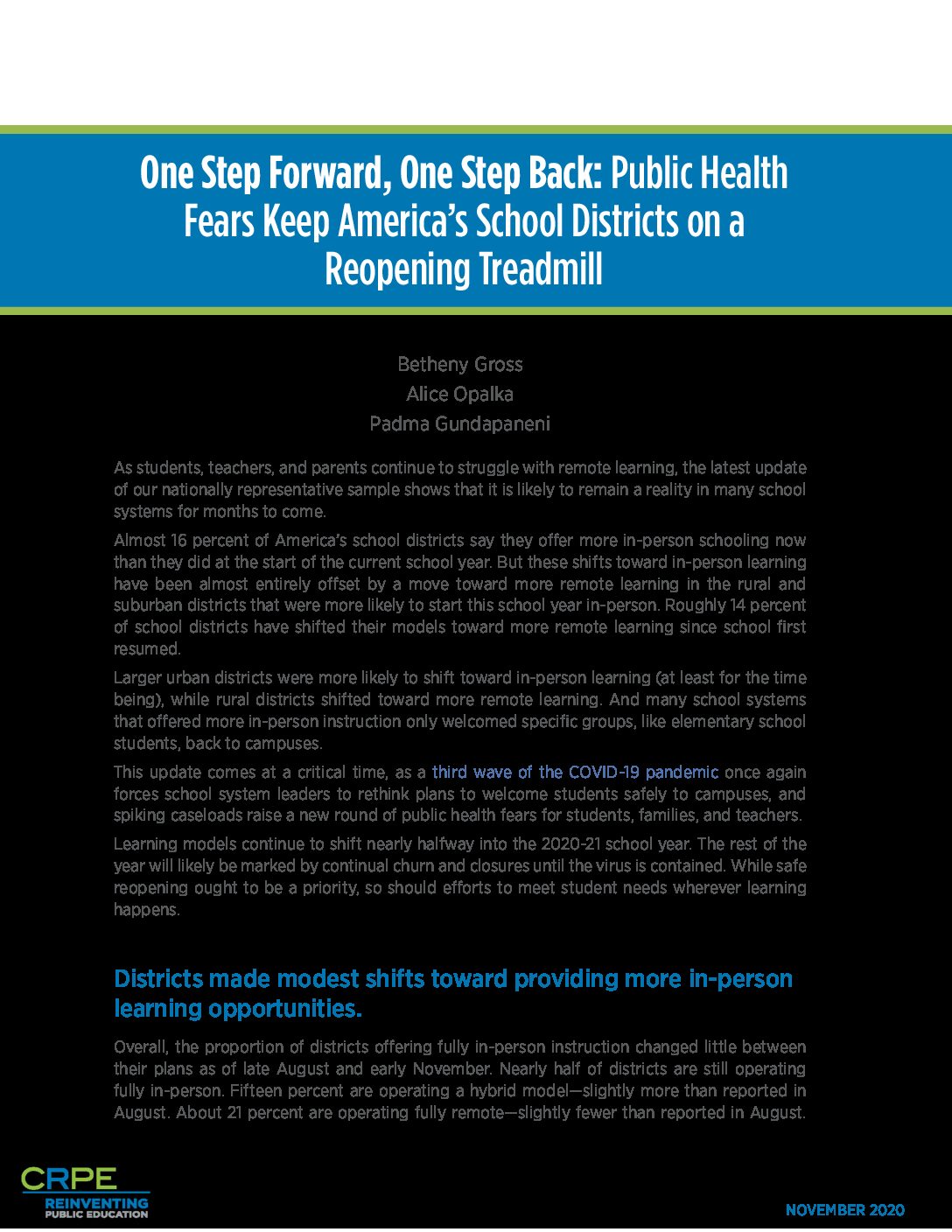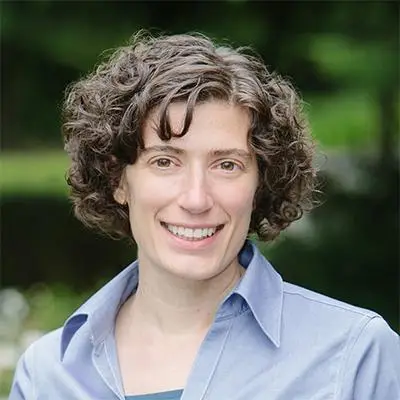This brief gives an update on our nationally representative sample of school district reopening plans. This update comes at a critical time, as a third wave of the COVID-19 pandemic once again forces school system leaders to rethink plans to welcome students safely to campuses, and spiking caseloads raise a new round of public health fears for students, families, and teachers.
We found:
Districts made modest shifts toward providing more in-person learning opportunities.
- The biggest change in modes of instruction is in the share of districts offering varying models across grade levels—meaning that at least some grade levels (typically elementary) are learning in-person or hybrid.
- A significant rural-urban divide persists. City districts are still far more likely to operate fully remote than suburban and rural districts. Rural districts remain far more likely to operate fully in-person than city and suburban districts.
Districts are prioritizing younger students and students with disabilities for in-person learning.
- Nearly 60 percent of districts reported offering full in-person learning to elementary grades, while less than 50 percent of districts reported offering full in-person learning for middle and high schools.
- Of the school districts that operate in full remote or hybrid models, 41.3 percent of school districts provide some sort of priority access for students with disabilities.






